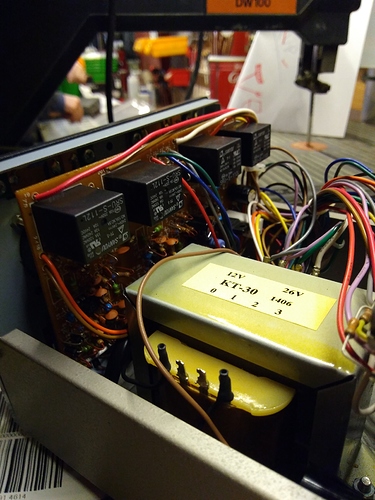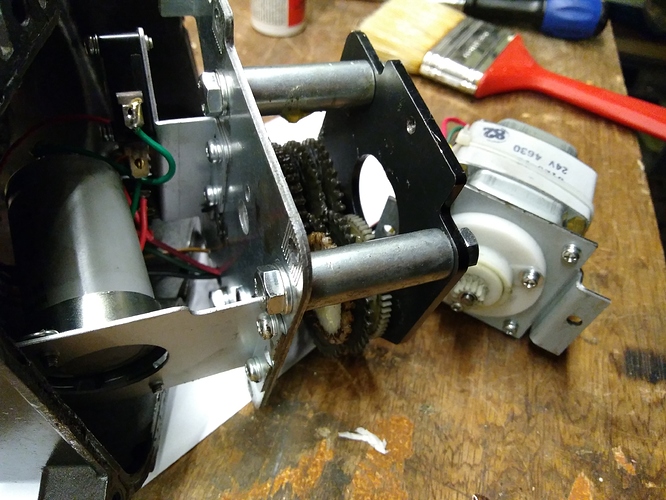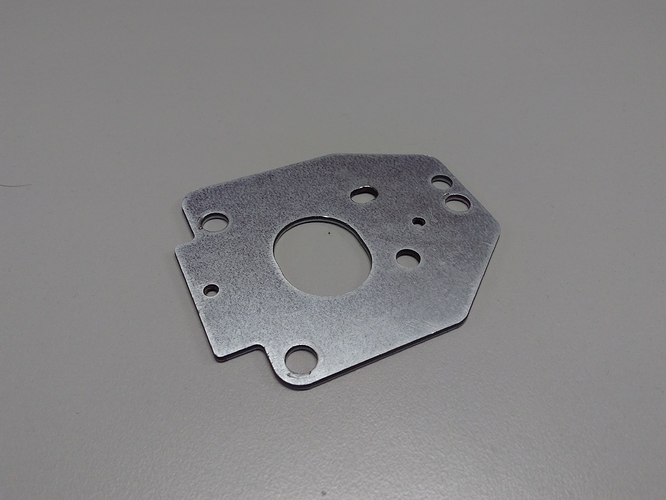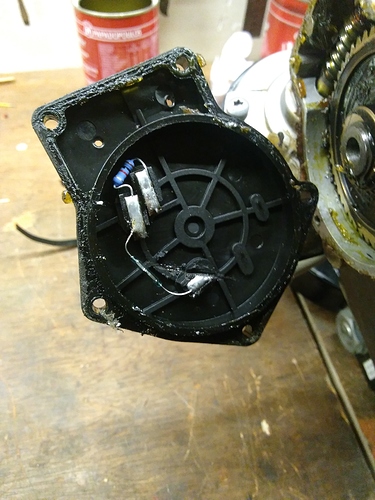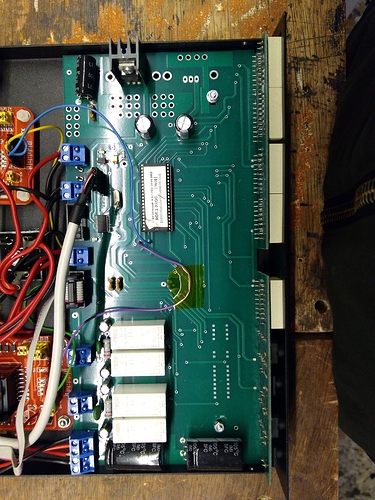The existing rotator controllers, as i known, are old fashioned and use obsolete technology either in hardware or in software. Almost all the motor drivers are based in electromechanical switches like relays. This introduce in a system a limit of how usual could be used for an observation of a satellite and also in accuracy in movements of the rotator. In this review, it is presented the most popular in HAM community, rotator systems.
Existing commercial rotator systems:There are three rotator systems, as i searched, are the most popular in HAM community for tracking satellites.
- Yaesu G-5500, it is an AZ/EL rotator. From data sheet, could understand that it has AC motors (26V@2.8A, specifications of transformer for both motors), potentiometer for position feedback which are operated in +6V, and all control loop is implemented with analog IC’s (comparators and opamps). Also the system has end-stops in both axis in both directions (min-max), that immediately cut off the current of motors. The connection with a client is implemented for example via an ardushield. The cost of all system is ~750$ with analog controller.
- A list of available digital controllers:
A comment about the gear box of rotator, almost all gears are made from laser cut sheet metal, and it is a spur gear box. Also another interesting thing is the brake system that it’s a torsional spring in motor axis that blocks the movement from output to input.
A mechanical fail of one bracket that mounts the pins of gears. This problem, i think, is produced because the antennas are back mounted without counter balance.
-
SPID rotators, two AZ/EL models, RAS and BIG-RAS. Both of models are:
- using DC motors, according to data-sheets, BIG-RAS and RAS
- looking at power supply consumption, 12V@6-10A or 18V@6-11A,
- magnetic sensor (Reed Switch) in the first stage of worm gear box (in total two worm gear boxes), with 6 number of magnets that produce pulses with Vp-p according to Vcc of reed switch.
It seems that the encoder is relative, so when the system starts it programmed the zero position. But what happens when the system lost the power? The user could be reprogrammed the rotator or the system is programmed in each control loop or in the interrupt from reed switch pulse to store the current position?
Also the system has two hard stops in elevation axis that limits the rotation between 0-180 deg. This switches immediately cut off the current to elevation motor. In the azimuth there is no end-stop.
A note about the mechanical side of system, it is consist of two stages of worm gear box. The second stage (the output) it takes all the loads. Also in this system the brake mechanism is the two stage worm gear box ( big gear ratio and also the lead angle of worm gear). The cost for RAS with Rot2Prog controller is ~1200$, for BIG-RAS with Rot2Prog controller is ~1600$
A list of available digital controllers:
- Rot2Prog, the motor driver again, it is relays. The interface with client is done with Hamlib via a USB. A note here, is that the cable is USB-A male to USB-A male, weird? Two rectifier bridges used for protection of the board from the currents of DC motors. The cost of Rot2Prog is ~250$
- RT-21 Azimuth/Elevation, Green Heron Engineering LLC, 889$. If anyone knows more about it, i’m very interesting to learn more. This feature is nice, “Allows different Azimuth and Elevation rotators from any manufacturer provided they both use either AC or DC motors. (Example: We can configure the Azimuth to use an OR-2800 and the Elevation to use a DC motor linear actuator. OR, the Azimuth to use a T2X, and the Elevation to use a Yaesu G-550)”
- MD-01/02 HR, it is high resolution edition of rotator controller, 0.1875 deg. Instead of using reed switches in first stage of worm gear box, it uses a hall effect sensor. Again the motor driver is electro mechanical switches as shown in picture in page 3 of data-sheet, if i’m wrong let me know. The cost of this controller (only) is calculated: RAS/HR, RAS rotator and MD-02/HR controller ~1435E only the RAS rotator costs ~900E (an estimation), so the cost of MD-02/HR is ~500E.
- SPX-0n, rotators, SPX-01, SPX-02, SPX-03, all of these rotators it seems that are based in the same worm gear box with the RAS (the first stage). The second stage it is like that and changed according to the maximum output load (and maximum break torque). In these rotators i will try to guess or find documentation or data-sheets. From all data-sheets seems that motor needs power 12-18V@3-20A or 20-24V@3-20A (max current depends on load). All of these rotator use the same controllers with RAS/BIG-RAS i guess that the motors are DC (it seems that are the same with RAS/BIG-RAS). For position sensor, a reed switch for standard version and a hall effect sensor for high resolution version. What about end-stops? From the number of cables and from the type of controller it seems that there no an interface of end-stops connected to rotator controller. That means either is the same configuration or no end-stops are exist. In this system the brake system is the double worm gear. In the specification, the rotation range is AZ/EL:360/180deg is the same with the RAS. For the above analysis i couldn’t understand if in the system exists any end-stops.
If you have any comment and additional documentation, please add a comment in the thread.
